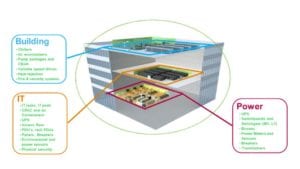Utilities and energy consumers are working together to combat the growing threat of climate change. Utilities are digitizing networks to improve the integration of renewable energy resources using smart grids and microgrids and increasing energy efficiency. At the same time, consumers are reducing their carbon footprint by becoming prosumers who produce their own energy, as well as changing their energy consumption patterns.
Microgrids play an important role in building a low-carbon future because they bring resilience to the main grid, optimize energy costs, allow for renewable energy hosting, increase electrical vehicle integration, and improve energy accessibility.
Microgrids are able to operate flexibly within their perimeter of control by using electric or thermal storage, load shedding, and shifting. This flexibility use enables the self-consumption of renewable energy, peak shaving strategies that will flatten the load curve, and tariff management. For tariff management, utilities design variable tariffs that will statistically limit costly peak generation, which in most cases requires generation means that produce CO2 emissions. These tariff structures address challenges like the growing use of self-consumption and DER integration.
Utilities can potentially avoid an expensive, lengthy investment in grid reinforcement because microgrids contribute to contain the impact of variability of DER within the microgrid and are also a source of flexibility that can be leveraged by distribution utilities. Flexibility lets utilities more easily integrate renewables and optimizes the use of existing grid assets without oversizing the system, a major challenge because it is more difficult to balance supply and demand using distributed energy resources (DERs) than with traditional energy generation. This means utilities need more flexibility in supplying power, which demand response can provide.
Demand response — both explicit and implicit — is an important grid-balancing tool that brings the necessary increase in flexibility by moving energy consumption to outside of peak hours to reduce peak load and strain on the grid. It also allows for greater energy efficiency and better integration of renewables, while at the same time empowering and rewarding utility customers who adapt their energy consumption.
Demand response is primarily focused on moving the time of energy consumption. For consumers, this may mean changing their consumption patterns, for example, charging electric vehicles or washing clothes at off-peak times. By voluntarily adjusting their regular electricity use because of pricing signals or requests, consumers can provide flexibility to utilities.
Implicit demand response, which is also referred to as “price-based demand response,” can only be achieved through a large number of prosumers’ participation, since the final decision to adapt the power profile to an external signal remains the end user’s decision. Using implicit demand response, consumers choose to adapt their behavior to save money on energy use by agreeing to reduce their energy use from high consumption periods to lower consumption periods. This can be an automated decision or based on personal choice.
Explicit demand response, which is sometimes called “incentive-driven” or “incentive-based demand response,” involves a third-party aggregator that takes direct control of microgrid flexibility. Flexibility potentials and the associated cost will be defined in advance in a contract between the prosumer and the third party. This aggregator then facilitates and manages the aggregated load’s trade in electricity markets. Those explicit demand response (DR) actions can be motivated by the energy market via an aggregator or triggered by the network operator to limit grid congestion and or voltage issues.
System operators can use explicit demand response as an operational tool to balance the load. In contrast, implicit demand response lets consumers benefit from price fluctuations in the wholesale energy market but it is not an operational tool.
These two types of demand response have different purposes within electricity markets, and it is possible for consumers to participate in both at the same time.
It is widely recognized that to reduce CO2 emissions, utilities must adopt new solutions to managing energy issues. These strategies include increasing the use of renewables, adopting microgrids, improving flexibility usage, installing smart meters to provide customers and utilities themselves with more visibility into energy use, and encouraging them to alter consumption patterns.
To learn more, download the white paper “How Electrical Distribution Networks Can Contribute to a Low-Carbon Future.”


